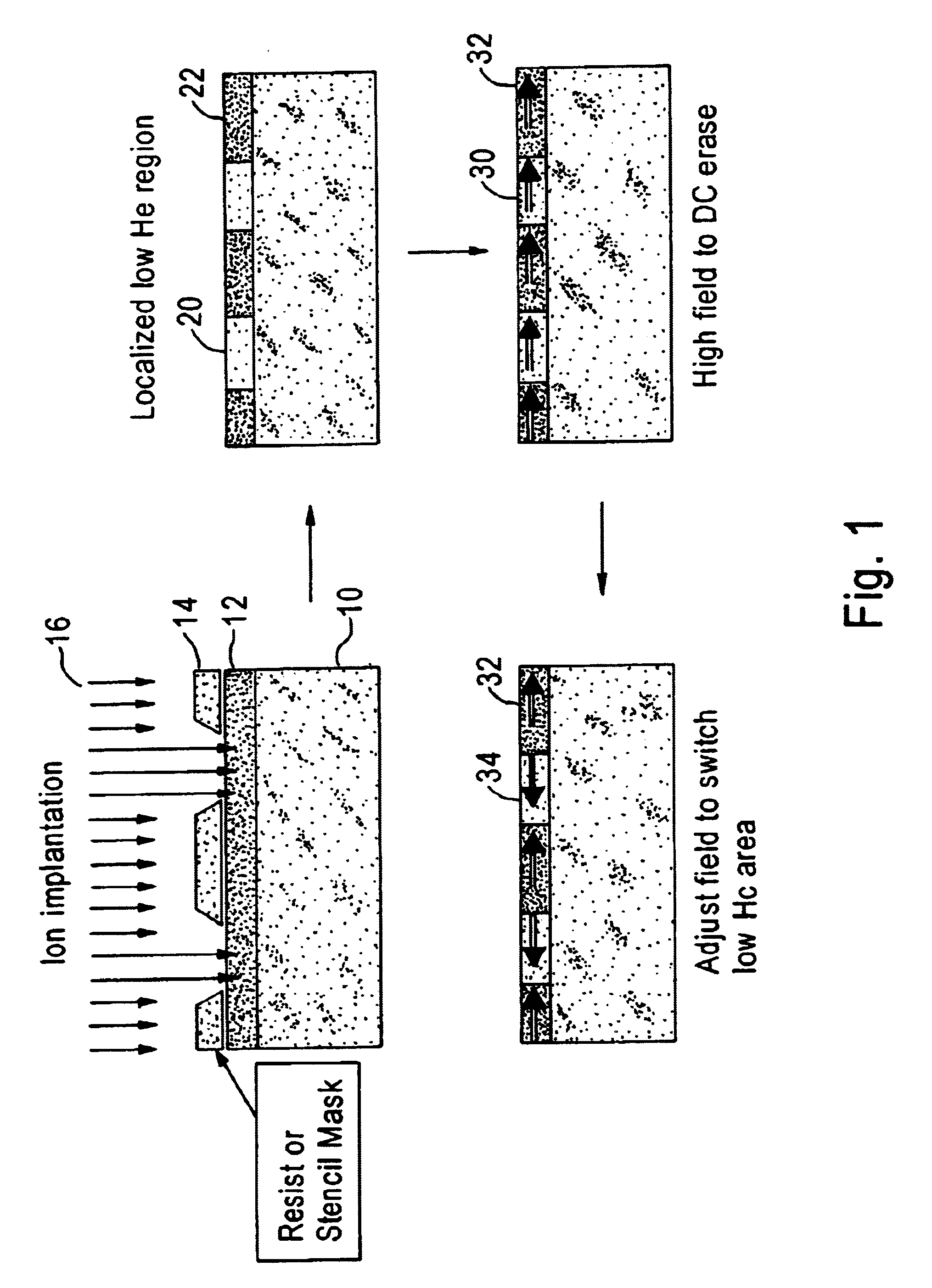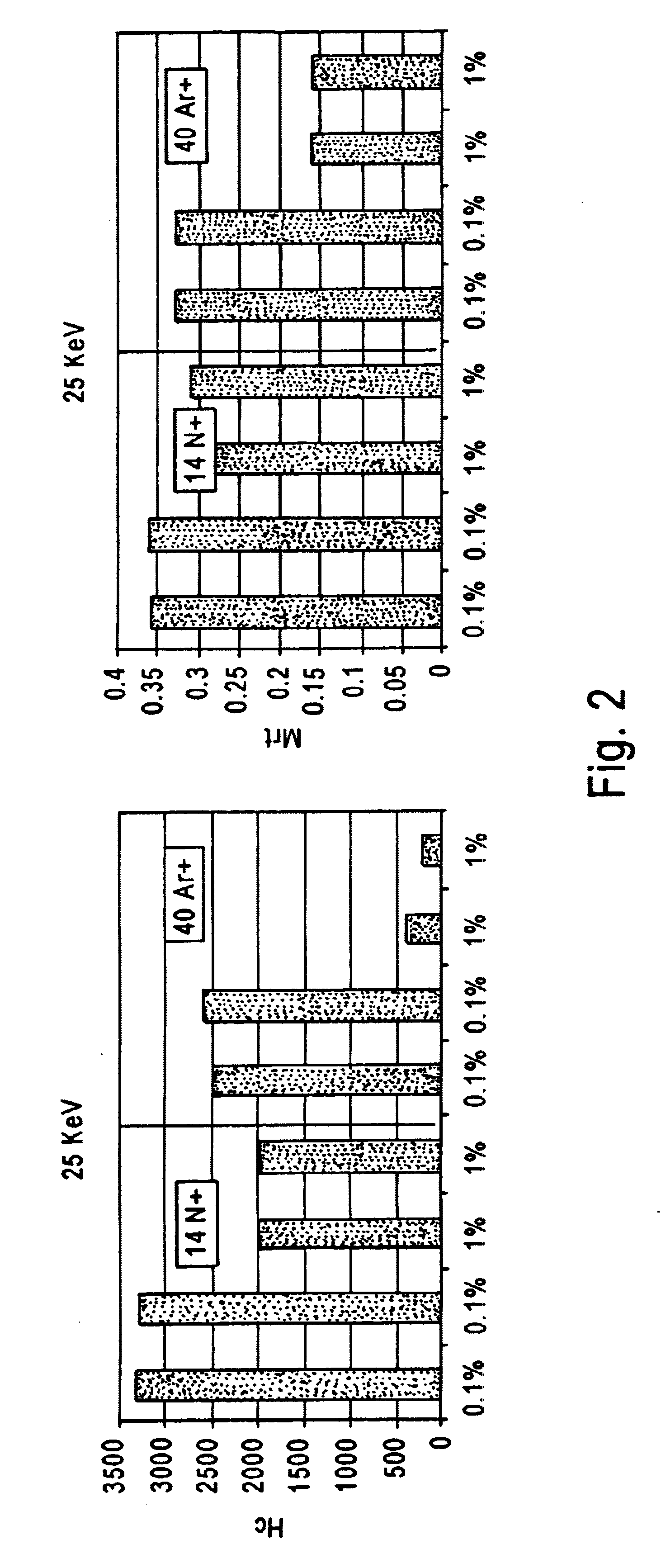Patterning longitudinal magnetic recording media with ion implantation
a longitudinal magnetic recording and ion implantation technology, applied in the field of magnetic recording media, can solve the problems of requiring expensive servo-pattern writing equipment, and reducing the tribological performance of the disc assembly, so as to increase the recording density, and increase the coercivity of production
- Summary
- Abstract
- Description
- Claims
- Application Information
AI Technical Summary
Benefits of technology
Problems solved by technology
Method used
Image
Examples
examples
A series of longitudinal magnetic recording media were subjected to ion implantation at selected energies and dosages. The media comprised a substrate, a 600 ÅNiAlT layer thereon, and a thin, e.g. 38 Å, CoMo seed layer on the nickel layer. A magnetic layer was deposited directly on the seed layer and comprised a CoCr layer, and two successive CoCrPtB layers thereon providing a total thickness of approximately 160 Å for the magnetic layers. Overlying the magnetic layer was an amorphous carbon overcoat of about 30 Å.
The magnetic layer had a coercivity of about 3950 Oe and an Mrt of about 0.4. FIG. 2 graphically illustrates the effect of implanting various dosages of either N+ or Ar+ions at 25 KeV through the carbon overcoat and through the magnetic layer. As shown, the coercivity was reduced from about 2500 Oe to as low as about 200 Oe and the Mrt was reduced from about 0.325 to about 0.17 with argon implantation. FIG. 3 graphically shows the effect on coercivity of the media by the c...
PUM
| Property | Measurement | Unit |
|---|---|---|
| magnetic field | aaaaa | aaaaa |
| size | aaaaa | aaaaa |
| coercivity | aaaaa | aaaaa |
Abstract
Description
Claims
Application Information
 Login to View More
Login to View More - R&D
- Intellectual Property
- Life Sciences
- Materials
- Tech Scout
- Unparalleled Data Quality
- Higher Quality Content
- 60% Fewer Hallucinations
Browse by: Latest US Patents, China's latest patents, Technical Efficacy Thesaurus, Application Domain, Technology Topic, Popular Technical Reports.
© 2025 PatSnap. All rights reserved.Legal|Privacy policy|Modern Slavery Act Transparency Statement|Sitemap|About US| Contact US: help@patsnap.com



